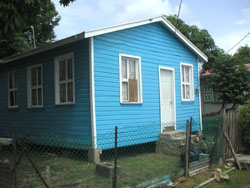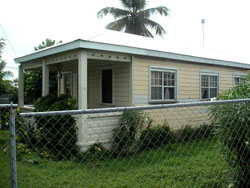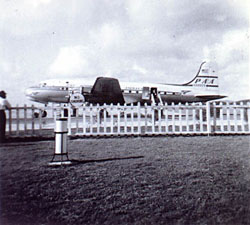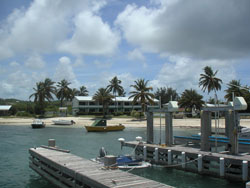The Legacy of the Bases
By July 1943, with a change of regime in the French islands, the submarine threat diminished and Antigua's importance immediately declined. Aerial patrols moved over to Coolidge in December 1943 and Crabbs became a Naval Auxiliary Air Facility in February 1944, providing refueling facilities, quarters for visiting crews and some communications. It went into caretaker status in January 1945.
Despite their short life, the U.S. bases had a profound impact on the Antiguan economy and society. Roads were built, drainage was improved, and the water supply was increased (Magnet, 1 November 1940). The infusion of U.S. dollars led to a huge rise in the standard of living. A number of schools (including Ottos Primary School) and houses (including Michael's Village) were subsequently built from the lumber that had been at the Base.
The Americans not only provided relatively well-paid jobs at a time when the economy was depressed, but taught the people who worked there many new skills, particularly related to construction. In addition, the fact that Antigua had a long runway gave it a jump start on the tourism industry. (Before Coolidge was turned back to the British, Villa Airport received commercial flights, the first in March 1943 [Dyde: 236]. The runway was short and covered in grass, which made it hazardous when it rained [Warren personal communication].) The Officer's Mess became one of Antigua's first hotels for tourists.
In addition, the rent the Americans paid for continuing use of Crabb's and of the northern part of the army base have gone into major infrastructural projects, including the dredging of the St. John's harbor and acquiring land elsewhere in the island. And last but certainly not least, the bases were a training ground for many of the future leaders of the Antigua Trades and Labour Union, including V.C. Bird, Kem Roberts, Bradley Carrott, Lionel Hurst, and J. Oliver Davis, all of whom worked there at one time or another.





